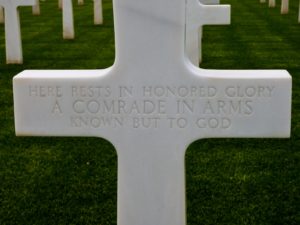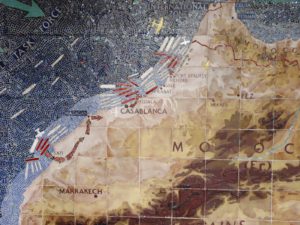24 May Punch Bowl, Oahu — Memorials
On December seventh, 2001, veterans of the Japanese attack on Pearl Harbor got together to drink and make up stories about what they’d done on that day sixty years ago and, generally, to celebrate their Americanness.

My buddy Don and I were there, too. Nobody was checking ID’s and we just walked in and crashed the party.
The guys were loud and obscene and sloshing with alcohol and the few wives who’d come along looked embarrassed and proud at the same time. “Hey, you want to see my tattoo,” an old sailor would yell and jump up on a table and pull down his trousers to show off the anchor on his ass, like the version of Popeye the animators wished they’d been allowed to draw.
The History Channel was there. They had a studio upstairs and were getting the guys on tape, in their own voices, while they still could. The youngest were pushing eighty and everybody knew there wasn’t going to be a seventieth reunion, but the interviews were running late. Hours late. Those guys wouldn’t shut up in the meeting hall, and they wouldn’t shut up on camera. Fifteen minute interviews ran thirty, forty, fifty minutes while the men waiting downstairs for their turn to dictate history drank and laughed and became ever more garrulous. A virtuous circle if ever there was one.
Years later, I switched on the History Channel and watched some of those interviews. They didn’t last thirty or forty or fifty minutes. A couple or three minutes at the best. This was family television, after all. It was like watching the Bob Hope show on television I’d seen in real life in Vietnam. Once they’d cut out the obscene parts there hadn’t been all that much left to broadcast.
Something the History Channel didn’t say but I know in my heart. If anybody had dared call these guys Pearl Harbor survivors, they would have been thrown out the window. These guys weren’t survivors. They won the god damn war. It was the Japanese, the ones who were left, who were the survivors.
The next morning, Don and I took the lighter out to the USS Arizona Memorial. It’s a graceful, white structure built over the sunken battleship and the more than eleven-hundred sailors who never made it out. You follow an open, colonnaded walkway past a rusting gun turret and a small, rainbow sheen on the water. The tears of the Arizona, it’s called: bunker oil still leaking after all these years.
At the end of the walkway you come to a shrine enclosing a marble wall with the names of the men below your feet. On the wall to the left is a small plaque with thirty more names. Those are the men who did make it out. The memorial is as dignified, and as moving, as anything from Periclean Athens, only more so because it’s ours. Because we’re Americans, too. Because we recognize the names on the wall, even if we never knew the men.
The day we went, a young Japanese man was in line ahead of us, amusing a pair of nubile young ladies by pointing to the mountains over Oahu, buzzing his hands through the air and making airplane noises. He was, I was almost certain, describing the attack from the Japanese point of view. He’d had the story first hand. From a grandfather, perhaps. Or a revered teacher. A fellow veteran to the men beneath our feet. One more young man drafted to fight in a war not of his own making, that’s what I was supposed to think. I know that. What I did think was, I’m going to grab this son of a bitch and throw him over the side. Followed by, no jury in the America would ever . . . . But the line moved on and I missed my chance.
Years later, Peggy and I were in Carthage. Same war, different memorial. We’d gotten our butts kicked there, too. Months later when we pushed the Germans back out, we recovered some of the bodies. A few we could still identify. Most we wouldn’t. Most were never found at all.
British soldiers died there, too, but their people don’t do the memorial thing the way we do. They bury their dead where they fell, a score here, a dozen or so there. Hundreds of little memorials scattered about the countryside. Iron railings around simple markers, the land returning to the same brush and thorns that cover the Phoenician and Carthaginian soldiers, the Roman legionnaires, the Vandals and Saracens and Berber warriors who fell in the same places. We do it better.
The North African American Cemetery and Memorial could be Arlington, it’s so green and beautiful and well-kept. Broad walkways and reflecting pools and row after row of grave markers, 2,841. Some with the names of people I felt like I should recognize, Foy Draper, the sprinter who took the gold medal in the 1936 Olympics in Berlin. One degree of separation, almost. My dad saw him steal that piece of gold out from under the noses of Hitler’s supermen. Most with no name at all.
There’s a little chapel on the site with mosaic maps of the North African campaign

and more names. Three-thousand seven-hundred and twenty-four men who were never found at all. To me those names, the names of young Americans who went off to war and were never seen again, they were the most moving of all.


No Comments